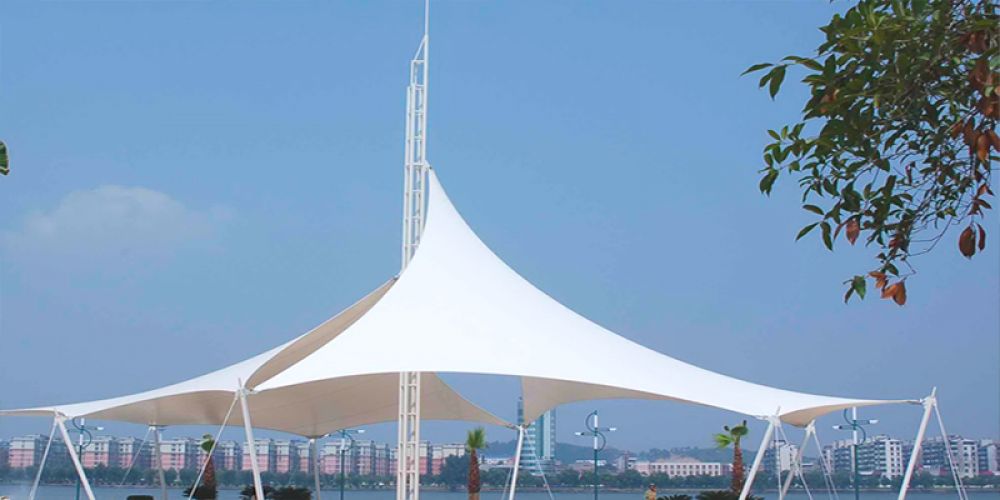
Applications of Architectural Fabric
“Fabric” is most commonly used to refer to either a cloth or other material produced by weaving fibers together for strength, or in structural terms referring to the materials used in walls, floors or the roof of a building.
Architectural Fabrics combine both terms – using a woven polymer fabric coated or laminated with a synthetic material layer to form a membrane. The membrane is then tensioned over a steel frame to produced roofing, umbrella canopies, facades, interior cladding or art installation pieces.
The advantages of tensile membrane structures created with woven polymer fabrics instead of traditional building materials such as steel, slate or aluminum are:
Lightweight – less structural support required.
Translucent – they allow natural light to filter through the material.
Durable – the polymer fibers do not rust, corrode or breakdown in UV light.
Aesthetic – tensioned membranes form beautiful curved surfaces allowing architects and designers free range to create unique structures.
Advantages of Tensile Membrane Structures
The main advantages of tensile membrane structures are their lightweight nature and translucent (light-transmitting) properties. These features offers the ability to create light, aesthetically beautiful and premium-quality architectural fabric structures at a fraction of the load-bearing weight required by steel or aluminium roofing.
Such as PTFE-coated fiberglass or PVC-coated polyester, tensioned over a steel frame with cables or compression rings. In the case of some of newest, most exciting membrane projects, ETFE foil, a polymer membrane, is being used to create elegant, lightweight glazed
Main Applications of Tensile Structures:
Permanent commercial umbrellas and modular pavilions for the hospitality and tourism industries
Shade and weather protection canopies of different shape and sizes,Car park shade structures
Large-span roofing over a stadiums or sports facilities
Vehicle Protection Hail Net or Mass Vehicle Protection
Interesting public walkways and pedestrian area design
Architectural facades for buildings, bridges and shopping centres
Sound-absorbing interior fabric ceilings, walls and highly translucent ETFE skylights